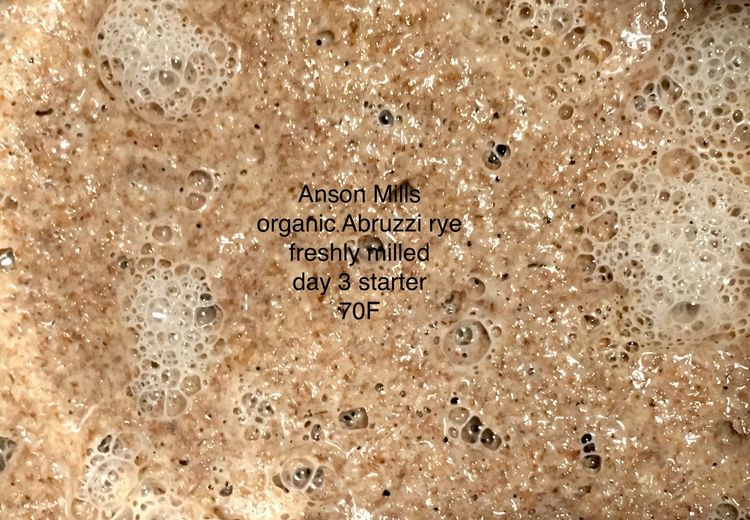Sourdough Starter Day 3
Nanna Meyer
The sourdough starters at the UCCS Farmhouse are looking good. You can see how the yeast is now digesting some of the sugars released from the breakdown of starches (amylose, which are long glucose chains that break down to di- and monosaccharides). The lactobacilli bacteria help in this process. These sugars feed the yeast, generating lots of gas bubbles (CO2 and ethanol). Lactobacilli and yeast live side by side in a symbiotic relationship in this acid environment, feeding on the different sugars specific to each of them. Microbes in these starters, and later in the dough, have many functions, including lactic acid fermentation, aromatic and antimicrobial actions, protein breakdown (eg., gluten), and the generation of extracellular polysaccharides such as acetate. Together and in sourdough, these microbes impact bread quality, leavening, flavor, nutrition, texture, and shelf life in a complex web. Sourdough fermentation, for the most part, improves the flavor and nutrition of bread - in fact, some of the dough's nutritional quality is actually maintained or even enhanced in these breads. The key is to take time to make a starter, then maintain it with proper feedings, incorporate the starter into dough, and bake bread every week!


 These starters are getting ready for tonight (day 4) when Krista will mix her flour with the starter and I will make pre-ferments with starter and about 1/3 to 1/2 of the flour that will end up in the loaves. Stay tuned!
These starters are getting ready for tonight (day 4) when Krista will mix her flour with the starter and I will make pre-ferments with starter and about 1/3 to 1/2 of the flour that will end up in the loaves. Stay tuned!